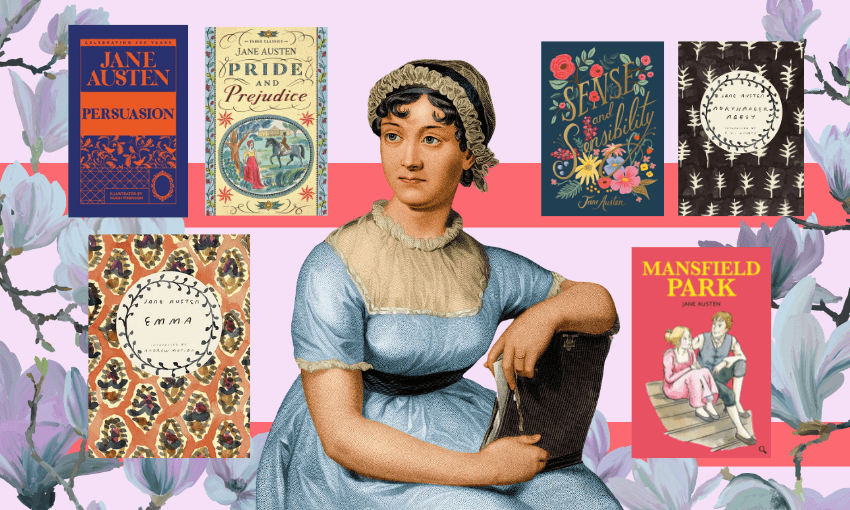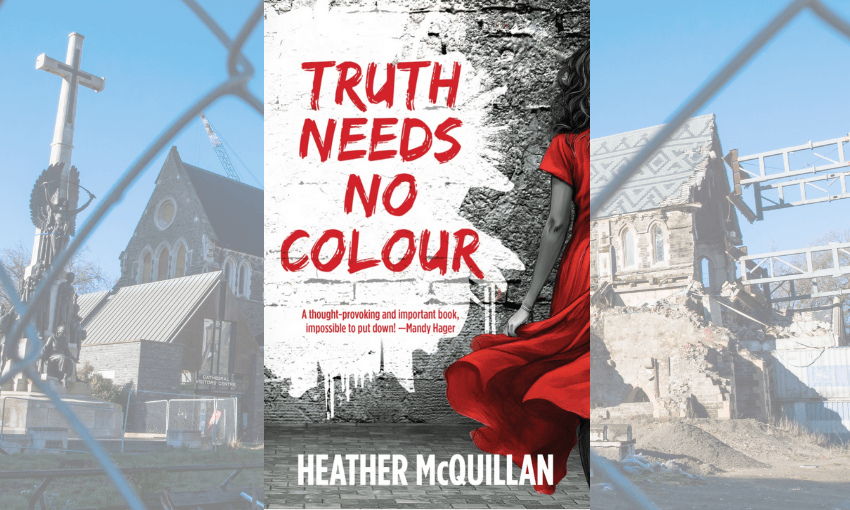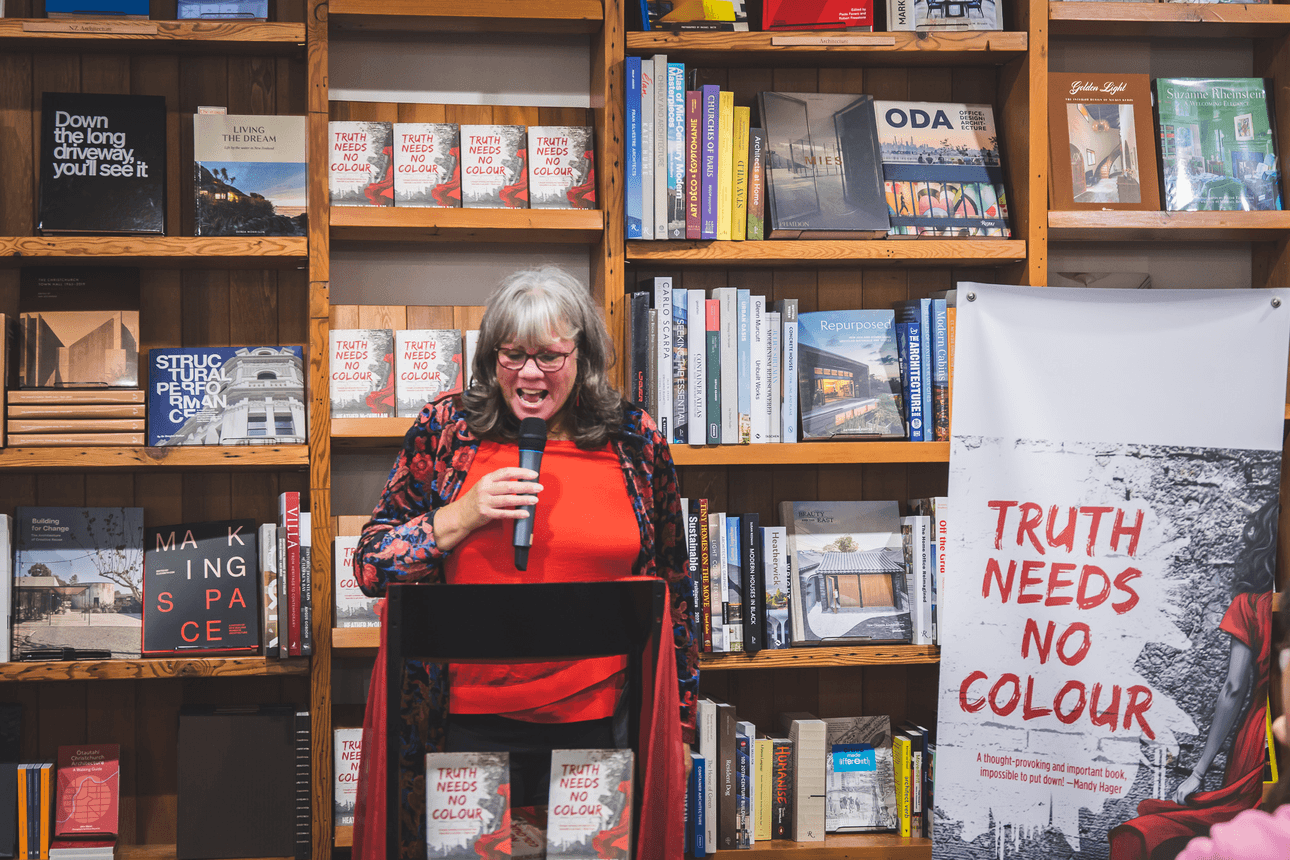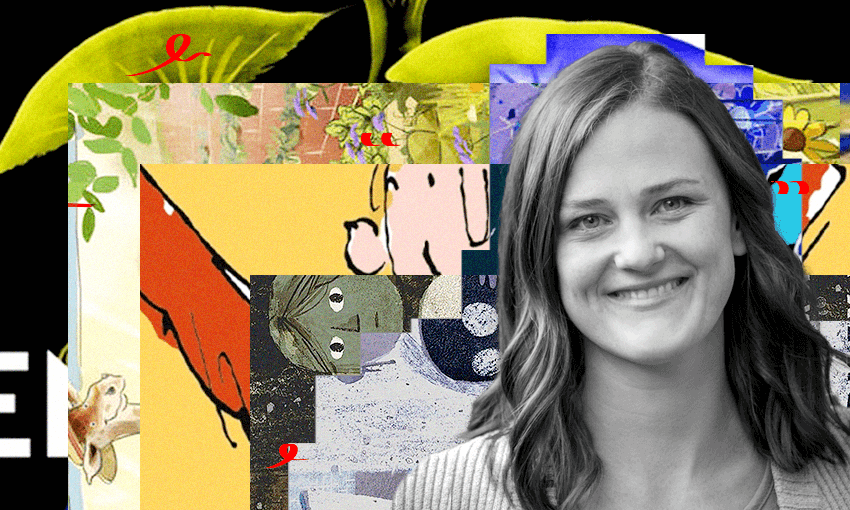On the occasion of Jane Austen’s 250th birthday, Hannah August ranks her novels. Happy birthday, Jane!
It was 250 years ago this year that a family in a small village in Hampshire welcomed the arrival of a baby daughter. This daughter would go on to write six of the most beloved novels in the English language, attract the type of fandom more commonly associated with modern-day pop stars, inspire a proliferation of increasingly loose film and television adaptations of her work, and end up with her portrait on the English 10-pound note.
The occasion of Jane Austen’s 250th birthday is a perfect time to revisit her work. But before you cue up the 1995 BBC Pride and Prejudice, consider the joys that can be had from actually reading the original novels. And if you’ve never read one and are wondering where to start, The Spinoff has kindly prepared the following entirely non-definitive ranking.
6. Sense and Sensibility
Sense and Sensibility was Austen’s first novel, and it shows. It’s pretty schematic – its central characters, the sisters Elinor and Marianne, respectively embody the qualities in the novel’s title, but unlike in Pride and Prejudice, these qualities of characterisation don’t really drive the narrative events. Instead, Elinor and Marianne are at the mercy of the two men they fall for, the charming yet insincere John Willoughby (Austen’s first experiment with the fuckboy character type, who will show up again and again in subsequent novels), and the nice but dull Edward Ferrars.
The best thing about this book is the recognisability of certain characters – most straight women have known (and perhaps dated) a Willoughby; many of us have held tight to the same romantic ideals as the youthful Marianne. But this doesn’t really make up for the multiple missteps of its final movement. Elinor’s beloved Edward is suddenly released back onto the marriage market through a plot twist that feels awkwardly contrived; Willoughby’s sympathetic response from Elinor when he finally apologises for his behaviour ignores his truly awful treatment of a previous lover. And there’s a bit of unavoidable ick for contemporary readers about having the 17-year-old Marianne end up with a man 18 years her senior.
Eligibility verdict: Sense and Sensibility will always be invited to the ball, but lacks sufficient attractions to guarantee a partner for every dance.
5. Northanger Abbey
Northanger Abbey is a pretty silly novel. But it’s also the novel in which Austen most overtly flexes her satirical muscles, and as a consequence it’s also pretty funny. Its heroine is 17-year-old Catherine Morland: naïve, unaccomplished, “often inattentive, and occasionally stupid”, but also nice, enthusiastic about life, and very well-read in a certain type of novel.
The novels Catherine prefers are those stuffed with Gothic clichés – ruined castles or (ahem) abbeys with hidden passageways, secret messages stashed inside innocuous-looking containers, apparent benefactors who’ve imprisoned young women. When Catherine is invited to stay with the Tilney family, who happen to actually live in an abbey, much of the humour and narrative tension that ensues results from her over-active imagination and her determination to map her reading onto real life, with embarrassing results.
Yet Austen’s message isn’t (naturally) about the dangers of reading novels – one of the most romantic moments of the book comes when Catherine discovers that her beau, Henry Tilney, is equally passionate about her favourite novels, and the takeaway is instead that reading for pleasure can be a key part of a life conducted with good sense and sound moral judgement.
Eligibility verdict: Northanger Abbey isn’t a key contributor to the drawing room conversation, but it’s having such a nice time chuckling over the book in its lap that it doesn’t care.
4. Mansfield Park
This is the Austen novel that most people haven’t read. Which is a shame, because it’s absorbing, tightly plotted, and feels like it’s prefiguring the later 19th century novels of George Eliot or Thomas Hardy. Fanny Price is the eldest daughter of a mother who made an ill-advised marriage and is struggling with a bothersome number of offspring. Fortunately Fanny’s aunts, who made better matrimonial and procreational choices, decide that they can take Fanny under their wing, and she moves to live with her four cousins at the country estate of Mansfield Park.
Fanny is quiet, timid, and well-behaved, and develops a crush on her cousin Edmund, who himself only has eyes for the more vivacious Miss Crawford. Edmund’s two sisters, meanwhile, are engaged in a rivalry for the affections of Miss Crawford’s brother, a charming cad in the Willoughby mode. How Fanny will escape the clutches of Mr Crawford when he ultimately turns his charm on her, and how she and Edmund will finally end up together, are matters of genuine suspense right up until the novel’s closing chapters.
Fanny’s a somewhat insipid central character, but the novel’s structurally highly satisfying in the way she becomes the fixed point on the moral compass of the supporting cast, the key members of whom undergo genuine self-development, or get their comeuppance in ways that feel fully deserved and narratively consistent.
Eligibility verdict: Like the shy, silent girl in the corner of the room, Mansfield Park turns out to be surprisingly engaging when you take the time to get to know her.
3. Persuasion
Diehard Austen fans are already pulling out their inkpots and pens to tell me this novel deserves a higher ranking, and I get why. Persuasion is the Platonic ideal of the romance novel, the urtext of enduring love and second chances. For anyone who’s ever hoped that the one that got away might show up on their doorstep years down the line – rewarding them for all the time they spent making the best of it as a single person – Persuasion is here for you.
At 27, Anne Elliot has, we are told, lost her “bloom”. (The satire in this novel is targeted towards characters – like Anne’s father and elder sister – who are obsessed with physical beauty and youthfulness.) At 19, she was in love with Captain Wentworth, a charming young naval officer whom she was persuaded not to marry by an older female friend because of his apparent lack of prospects. Eight years later, he re-enters her life, a much more eligible bachelor than he once was…
This novel is Austen’s most romantic because it vindicates individual conviction – Anne sees Wentworth’s true quality before society does, rather than conveniently falling in love with someone who’s already highly esteemed. But it’s not perfect – the cad character just gets shuffled off stage at the end, which is narratively unsatisfying, and Anne ultimately lacks the spirit of the heroines of the next two novels.
Eligibility verdict: Persuasion is absolutely marriage material. But its attractions are such as will appeal predominantly to more mature, refined tastes.
2. Emma
Emma is a perfect satire of small-town life. It takes to its greatest extreme Austen’s perennial theme of the limited prospects for young women living in rural villages – both in terms of matrimony and entertainment more generally. Twenty-year-old Emma Woodhouse, “handsome, clever, and rich”, is starved for things to do, channelling her energy and talents into misguided matchmaking endeavours amongst those who enter her small rural orbit. Her misplaced conviction that she’s right about everything is what makes her both infuriating and sympathetic. That she manages to endear herself to us despite the fact that the narrator is gently mocking pretty much everyone and everything throughout (her heroine included) is part of the novel’s charm.
The only reason this novel hasn’t ended up in first place is that, on the romance front, it’s a bit of a dud. Another 18-year age gap between Emma and her eventual husband is exacerbated by the fact that his treatment of her is occasionally uncomfortably paternalistic: telling her off for her bad behaviour (even if she’s deserved it) makes it feel as though she’s being shamed into loving him.
Eligibility verdict: Emma has masterminded your evening’s entertainment and has ensured that the victuals are excellent, the conversation sparkling, and an equal number of attractive young gentlemen are available to partner the ladies. Time spent with this novel cannot possibly be regretted.
1. Pride and Prejudice
So predictable, I hear you murmur around the card table. That Austen’s best-known, best-loved, most adapted novel should take out first place – did she even bother to read the others?
Here’s the reason Pride and Prejudice is a better novel than Emma or Persuasion: it has it all. It’s funny – see the depictions of Mr Collins, of Lady Catherine de Bourgh; also Austen’s presentation of the younger Bennet sisters and their parents. It offers a nuanced examination of the pressures of patriarchal society – see the different decisions Elizabeth Bennet and Charlotte Lucas make about matrimony. But it’s also the novel where it’s easiest to get behind the central romantic partnership.
Elizabeth Bennet is smart, kind, witty and independently minded. Mr Darcy is (though it takes a while for it to be revealed) loyal, generous and open to self-improvement. They’re both young and hot. It remains perennially easy to find them attractive as characters, whereas the qualities that distinguish a Fanny Price or an Anne Elliot are less seductive for contemporary readers. You do not want to get stuck at a party talking to Fanny Price; you’d be pretty happy to get stuck talking to Elizabeth Bennet. Pride and Prejudice encourages us to form an attachment to its romantic leads as individuals, not just to the idea of their eventual union – it is this that sets it apart from Austen’s other novels.
Eligibility verdict: It is a truth universally acknowledged that a ranking of items must be in want of a first-place-getter. Despite the excellent company, Pride and Prejudice is the most eligible contender for that title.
All of Jane Austen’s novels are available to purchase from Unity Books.





